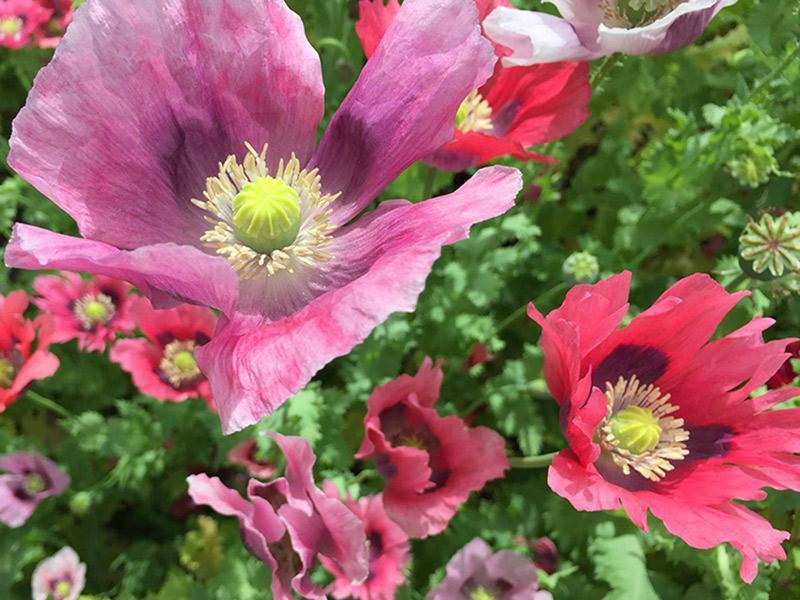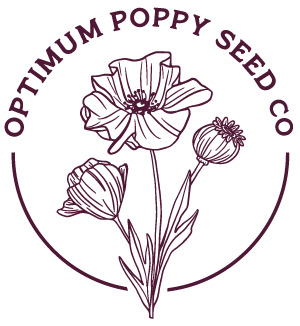GROWING INSTRUCTIONS
First, you want to prepare the ground properly by tilling the area you are going to plant the poppies in. A rototiller works best, but the old-fashioned shovel, pick, hoe, and rake will work great too. When a rototiller is not available, I recommend using a flat bladed garden fork because it turns the soil deeper, providing plenty of loose soil and aeration for vigorous root development. It is also a good idea to add organic fertilizer to the soil before planting. Cow manure is best; however, it will come with a lot of weeds. Chicken manure that has been allowed to rest for at least a year is also recommended. Once you have prepared the ground, it is time to plant your seeds.
The best two times of the year for planting poppy seeds are in the spring and fall. Poppies are a very hardy plant and they like the cold. For spring planting, plant your seeds just after the last snow has fallen. If it doesn’t snow where you live, plant the seeds in the middle of February. It’s easy, just sprinkle or “broadcast” the seeds where you want them to grow. If you live in a dry climate; be sure to water on a regular basis. The seeds should sprout within 7 to 25 days, depending on weather conditions. Due to the small size of the seeds, some folks have found that if the seeds are mixed with sand, you can cover a larger area. This way, you will find that they won’t be crowded so close together. You can plant them in rows or scatter them freely anywhere you like.
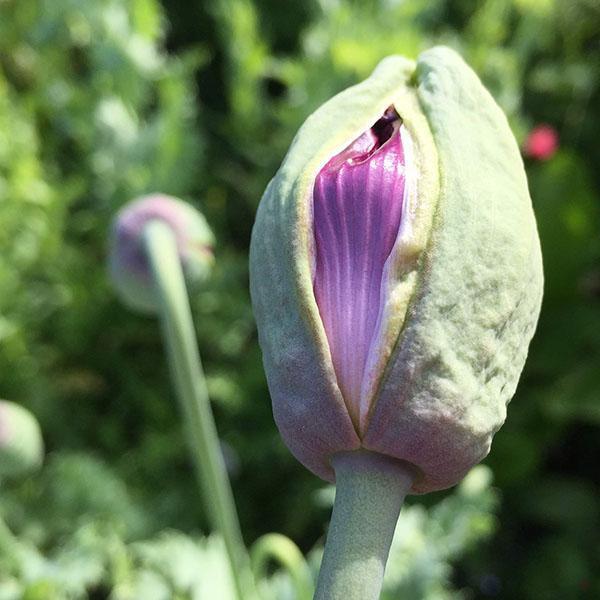
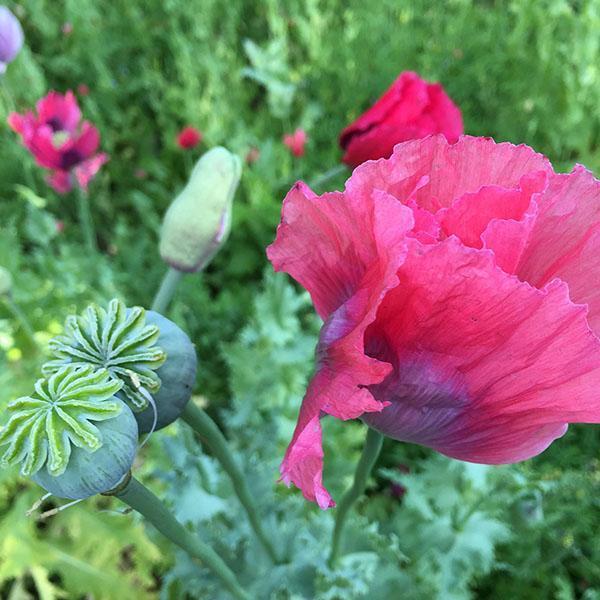
Some folks like to thin the plants out to about eight to ten inches apart when the seedlings reach a height of five to six inches. If you thin out the plants, the remaining plants will fill out more and produce more seed pods per plant. When the plants are about 10 inches tall, you want to start fertilizing them with a liquid fertilizer. Alaskan fish fertilizer works well for organic gardeners, and Miracle Grow, a common vegetable fertilizer, has also been known to work well. You can buy these fertilizers at your local garden store.
Be sure to follow the directions! Fertilize and water on a regular basis until you see the seed pods start to form. If possible, a slow release or time-release fertilizer will be ideal since they do not release until the temperature reaches the mid to high seventies, by which time they will be at the ideal height. This type of fertilizer lasts for three months, which is just the right time for nitrogen levels to taper off, thus promoting flowering. This will also increase the number of flowers, and, of course, seed pods per plant, even if you choose not to thin them out.
Lastly, let nature take over! Your plants will grow long stems with the flower and seed pod at the end. The flowers will last from three to eight days, then the flower petals will begin to drop off. The plant uses all of its remaining energy to reproduce. The seed pods will grow fat with seeds, and eventually the seed vents will open up to reseed themselves. This is the time to collect the seeds for cooking. Save the seeds from the biggest pods for the Fall planting. This is also the time to cut the long stems with their pods for dried flower arrangements.
Seed pod heads are frequently used in wreaths. You will love the large pods! The stems will dry straight and hard and can later be used for a number of things, such as: support sticks for other plants, arts and crafts, playing an ancient Chinese fortune telling game, or for a simple game of “pick-up-sticks”. For cooking, the seeds are a pantry necessity. In some countries, poppy seeds have been a staple, used to make flour and as an ingredient in most of their cooking. Everything from poppyseed cake and muffins, to an ingredient in herbal butters, as a decorative topping on biscuits, or for making a great poppy seed dressing. Many great poppy seed recipes can be discovered just by visiting your local library or by a quick online search.
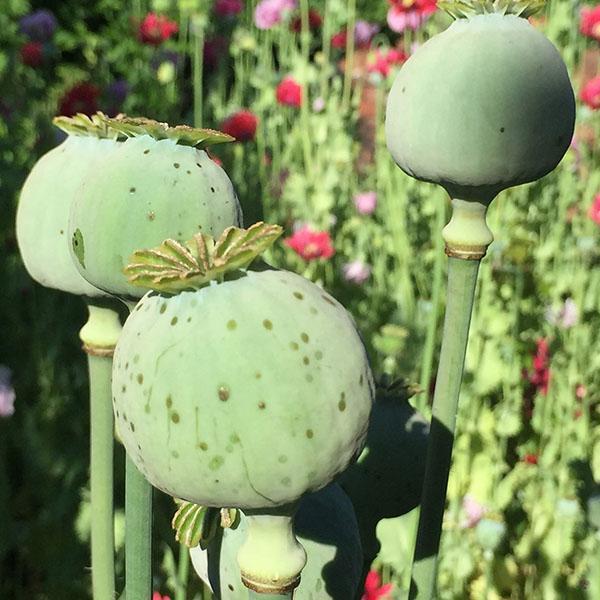
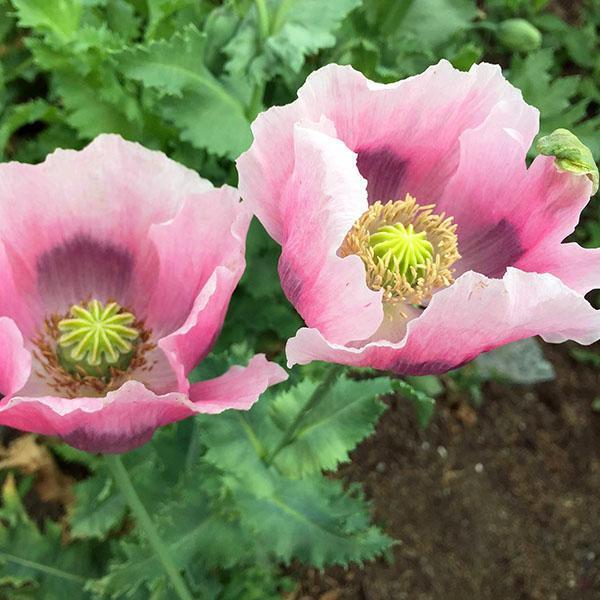
For Fall planting, plant your seeds in the middle of September and prepare the soil as I have indicated above. Poppies are very hardy; they should winter over just fine. However, just in case, save about half of your seeds for Spring planting.
Poppies are beautiful flowers that are a showpiece for any garden. However, they do contain alkaloids that are a narcotic. It may be illegal in your area to grow Papaver Somniferum poppies. Check your local laws. It is illegal to harvest the raw opium these plants produce. I am selling these seeds to you strictly for beautification and the decorative and cooking aspects of them. Once you start your own garden of these beauties, you will never need to buy seeds again!
The history of these flowers is incredibly interesting and their wonderful versatility makes these a very productive plant to own. I hope you enjoy these beautiful, ancient flowers!
Happy Growing,
Julie Collison
PREMIUM QUALITY POPPY SEEDS
Order Online
Our carefully curated selection of poppy seeds are sourced directly from our garden using the best growing techniques and packed with care to ensure maximum freshness and flavor. Whether you’re a home baker, a professional chef, or simply looking to add some pizzazz to your meals, our poppy seeds are the perfect choice. Shop with us today and experience the difference that quality makes!
